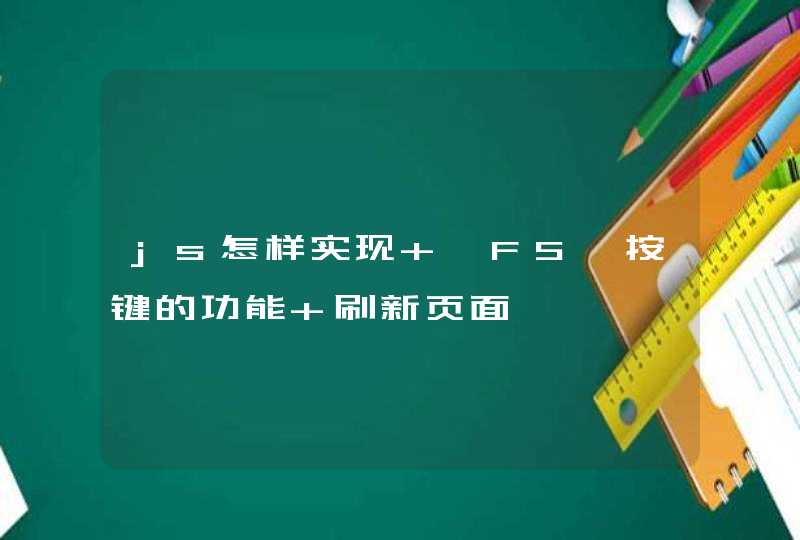
安装完成后可以通过命令行测试安装是否成功,输入:node -v,应该会显示当前安装node版本号。
本文中用到的模块,都是nodejs核心模块,不需要从外部下载,如果有需要,可以使用以下命令安装:npm install xxx。
开始
下一步,新建js文件,可以命名为server.js,代码如下:
var http = require('http')
var url = require('url')
var path = require('path')
var fs = require('fs')
var dir, arg = process.argv[2] || ''// 命令行第三个参数,用来接收目录,可为空,相对当前server.js文件的目录名称
// 比如使用命令 node server debug,意思就是debug文件夹与server.js文件同级
// 且你想以debug文件夹启动web服务
http.createServer(function (req, res) {
var pathname = __dirname + url.parse(req.url).pathname
dir = dir ? dir : pathname// 记住dir(目录)
pathname = dir ? pathname.replace(dir, dir + arg + '/') : pathname// 替换文件静态路径
if (path.extname(pathname) == "") {
pathname += "/"
}
if (pathname.charAt(pathname.length - 1) == "/") {
pathname += "index.html"// 入口文件,此处默认index.html
}
fs.exists(pathname, function (exists) {
if (exists) {
switch (path.extname(pathname)) {
case ".html":
res.writeHead(200, {"Content-Type": "text/html"})
break
case ".js":
res.writeHead(200, {"Content-Type": "text/javascript"})
break
case ".css":
res.writeHead(200, {"Content-Type": "text/css"})
break
case ".gif":
res.writeHead(200, {"Content-Type": "image/gif"})
break
case ".jpg":
res.writeHead(200, {"Content-Type": "image/jpeg"})
break
case ".png":
res.writeHead(200, {"Content-Type": "image/png"})
break
default:
res.writeHead(200, {"Content-Type": "application/octet-stream"})
}
// res可以自己添加信息来简单交互 比如可以修改点header信息 或者修改返回的资源数据
fs.readFile(pathname, function (err, data) {
res.end(data)
})
}
else {
res.writeHead(404, {"Content-Type": "text/html"})
res.end("<h1>404 Not Found</h1>")
}
})
}).listen(8085, "127.0.0.5")// 服务器端口
console.log("server running at http://127.0.0.5:8085/")
启动
当node安装完成及上述server.js文件也新建好之后。将其与你要访问的文件夹放在一起,可以放同层或者直接下层。比如,如果你要访问d:\test\debug文件夹。
你可以先将当前文件放入同层或者直接下,然后输入如下命令启动web服务:
先打开`cmd`,进入server文件所在目录,比如是`test`目录;
然后输入:`node server debug`(同层), 或者`node server`(子层),
此时会提示`server running at http://127.0.0.5:8085/`, 表示启动服务成功;
最后打开浏览器,进入:`127.0.0.5:8085`,即可访问此资源。
微应用、微模块的入口
SystemJS 是一个基于标准的模块加载器。
工作环境:
特点:
qiankun 框架配套开发支持 html 作为入口(entry) 的资源加载器(loader)。
工作环境:
特点:
为了方便 debugger 使用 Systemjs.import API 进行调试
调用 api import
- systemJSPrototype.import 实例方法
- preimport - 处理 script 标签
-对 type 为 systemjs-module、systemjs-importmap 进行处理
getOrCreateLoad ->loader.instantiate(id, firstParentUrl) loader 就是 Systemjs ->systemInstantiate 判断 shouldFetch(js false, css true
getOrCreateLoad 返回 load 对象
systemjs 除了对 js 也支持 css、json、wasm 文件资源,通过 systemJSPrototype.fetch 方法根据资源的类型判断调用 源生 fetch 获取资源包装成 systemjs 模块规范的对象返回
css 文件包装成 CSSStylesheet 对象返回
CSSStylesheet API
import-html-entry 的源码简洁清晰,进入方法中第一眼就能看到返回值对象
相同点:都是运行时加载
不同点:systemjs 可以通过插件加载 amd udm commonjs es6Module,import html entry 只能加载 umd
systemjs 不仅是个模块加载工具更是有一套标准的模块规范,single-spa 依赖 systemjs 规范通过 js entry 实现微应用、微模块的加载。
importEntry 只支持 umd 的 js 文件,qiankun 通过 importHtml 解析 html 模板分析资源 实现 html entry 的方式加载 微应用。
import-html-entry 作为工具更适合,systemjs 是独立的模块规范 webpack rollup 打包工具都支持 systemjs 规范。
原理都是对 script 标签的资源进行 appendChild 再 remove 的方式加载到全局,对 style 标签的资源进行 fetch 获取和解析。
import-html-entry 源码方面设计的很清晰可以参考 HTML Entry 源码分析 也可以通过 debugger 的方式自己了解。
首先在本地机器上安装并设置MongoDB服务。从Mongo网站上下载MongoDB,解压到本地目录,比如C:>Mongo
在上一个文件夹内创建数据目录。比如:C:\Mongo\Data
如果数据文件存放在其他地方,那么在用mongod.exe命令启动MongoDB时,需要在命令行加参数—-dbpath
启动服务
MongoDB提供了两种方式:mongod.exe以后台进程启动;mongo.exe启动命令行界面,可做管理操作。这两个可执行文件都位于Mongo\bin目录下;
进入Mongo安装目录的bin目录下,比如:C:>cd Mongo\bin
有两种启动方式,如下:
mongod.exe –dbpath C:\Mongo\data
或者
mongod.exe –config mongodb.config
mongodb.config是Mongo\bin目录下的配置文件,需要在此配置文件中指定数据目录(比如,dbpath= C:\Mongo\Data)的位置。
连接到MongoDB,到这一步,mongo后台服务已经启动,可以通过http://localhost:27017查看。 MongoDB启动运行后,我们接下来看它的聚合函数。
实现聚合函数
在关系数据库中,我们可以在数值型字段上执行包含预定义聚合函数的SQL语句,比如,SUM()、COUNT()、MAX()和MIN()。但是在MongoDB中,需要通过MapReduce功能来实现聚合以及批处理,它跟SQL里用来实现聚合的GROUP BY从句比较类似。下一节将描述关系数据库中SQL方式实现的聚合和相应的通过MongoDB提供的MapReduce实现的聚合。
为了讨论这个主题,我们考虑如下所示的Sales表,它以MongoDB中的反范式形式呈现。
Sales表
#
列名
数据类型
1
OrderId
INTEGER
2
OrderDate
STRING
3
Quantity
INTEGER
4
SalesAmt
DOUBLE
5
Profit
DOUBLE
6
CustomerName
STRING
7
City
STRING
8
State
STRING
9
ZipCode
STRING
10
Region
STRING
11
ProductId
INTEGER
12
ProductCategory
STRING
13
ProductSubCategory
STRING
14
ProductName
STRING
15
ShipDate
STRING
基于SQL和MapReduce的实现
我们提供了一个查询的样例集,这些查询使用聚合函数、过滤条件和分组从句,及其等效的MapReduce实现,即MongoDB实现SQL中GROUP BY的等效方式。在MongoDB存储的文档上执行聚合操作非常有用,这种方式的一个限制是聚合函数(比如,SUM、AVG、MIN、MAX)需要通过mapper和reducer函数来定制化实现。
MongoDB没有原生态的用户自定义函数(UDFs)支持。但是它允许使用db.system.js.save命令来创建并保存JavaScript函数,JavaScript函数可以在MapReduce中复用。下表是一些常用的聚合函数的实现。稍后,我们会讨论这些函数在MapReduce任务中的使用。
聚合函数
Javascript 函数
SUM
db.system.js.save( { _id : "Sum" ,
value : function(key,values)
{
var total = 0
for(var i = 0i <values.lengthi++)
total += values[i]
return total
}})
AVERAGE
db.system.js.save( { _id : "Avg" ,
value : function(key,values)
{
var total = Sum(key,values)
var mean = total/values.length
return mean
}})
MAX
db.system.js.save( { _id : "Max" ,
value : function(key,values)
{
var maxValue=values[0]
for(var i=1i
MIN
db.system.js.save( { _id : "Min" ,
value : function(key,values)
{
var minValue=values[0]
for(var i=1i
VARIANCE
db.system.js.save( { _id : "Variance" ,
value : function(key,values)
{
var squared_Diff = 0
var mean = Avg(key,values)
for(var i = 0i <values.lengthi++)
{
var deviation = values[i] - mean
squared_Diff += deviation * deviation
}
var variance = squared_Diff/(values.length)
return variance
}})
STD DEVIATION
db.system.js.save( { _id : "Standard_Deviation"
, value : function(key,values)
{
var variance = Variance(key,values)
return Math.sqrt(variance)
}})
SQL和MapReduce脚本在四种不同的用例场景中实现聚合函数的代码片段如下表所示。
1.各地区的平均订单量
下面的查询是用来获取不同地区的平均订单量。
SQL Query
MapReduce Functions
SELECT
db.sales.runCommand(
{
mapreduce : "sales" ,
City,
State,
Region,
map:function()
{ // emit function handles the group by
emit( {
// Key
city:this.City,
state:this.State,
region:this.Region},
// Values
this.Quantity)
},
AVG(Quantity)
reduce:function(key,values)
{
var result = Avg(key, values)
return result
}
FROM sales
GROUP BY City, State, Region
// Group By is handled by the emit(keys, values)
line in the map() function above
out : { inline : 1 } })
2.产品的分类销售总额
下面的查询是用来获取产品的分类销售额,根据产品类别的层级分组。在下面例子中,不同的产品类别作为个体维度,它们也可以被称为更复杂的基于层次的维度。
SQL 查询
MapReduce 函数
SELECT
db.sales.runCommand(
{
mapreduce : "sales" ,
ProductCategory, ProductSubCategory, ProductName,
map:function()
{
emit(
// Key
{key0:this.ProductCategory,
key1:this.ProductSubCategory,
key2:this.ProductName},
// Values
this.SalesAmt)
},
SUM(SalesAmt)
reduce:function(key,values)
{
var result = Sum(key, values)
return result
}
FROM sales
GROUP BY ProductCategory, ProductSubCategory, ProductName
// Group By is handled by the emit(keys, values)
line in the map() function above
out : { inline : 1 } })
3. 一种产品的最大利润
下面的查询是用来获取一个给定产品基于过滤条件的最大利润。
SQL查询
MapReduce 函数
SELECT
db.sales.runCommand(
{
mapreduce : "sales" ,
ProductId, ProductName,
map:function()
{
if(this.ProductId==1)
emit( {
key0:this.ProductId,
key1:this.ProductName},
this.Profit)
},
MAX(SalesAmt)
reduce:function(key,values)
{
var maxValue=Max(key,values)
return maxValue
}
FROM sales
WHERE ProductId=’1’
// WHERE condition implementation is provided in
map() function
GROUP BY ProductId, ProductName
// Group By is handled by the emit(keys, values)
line in the map() function above
out : { inline : 1 } })
4. 总量、总销售额、平均利润
这个场景的需求是计算订单的总数、总销售额和平均利润,订单ID在1到10之间,发货时间在2011年的1月1日到12月31日之间。下面的查询是用来执行多个聚合,比如,在指定年份以及指定的不同区域和产品类别范围里订单的总数、总销售额和平均利润。
SQL 查询
MapReduce 函数
SELECT
db.sales.runCommand(
{ mapreduce : "sales" ,
Region,
ProductCategory,
ProductId,
map:function()
{
emit( {
// Keys
region:this.Region,
productCategory:this.ProductCategory,
productid:this.ProductId},
// Values
{quantSum:this.Quantity,
salesSum:this.SalesAmt,
avgProfit:this.Profit} )
}
Sum(Quantity),
Sum(Sales),
Avg(Profit)
reduce:function(key,values)
{
var result=
{quantSum:0,salesSum:0,avgProfit:0}
var count = 0
values.forEach(function(value)
{
// Calculation of Sum(Quantity)
result.quantSum += values[i].quantSum
// Calculation of Sum(Sales)
result.salesSum += values[i].salesSum
result.avgProfit += values[i].avgProfit
count++
}
// Calculation of Avg(Profit)
result.avgProfit = result.avgProfit / count
return result
},
FROM Sales
WHERE
Orderid between 1 and 10 AND
Shipdate BETWEEN ‘01/01/2011’ and
‘12/31/2011’
query : {
"OrderId" : { "$gt" : 1 },
"OrderId" : { "$lt" : 10 },
"ShipDate" : { "$gt" : "01/01/2011" },
"ShipDate" : { "$lt" : "31/12/2011" },
},
GROUP BY
Region, ProductCategory, ProductId
// Group By is handled by the emit(keys, values)
line in the map() function above
LIMIT 3
limit : 3,
out : { inline : 1 } })
既然我们已经看了在不同业务场景下的聚合函数的代码示例,接下来我们准备来测试这些函数。
测试聚合函数
MongoDB的MapReduce功能通过数据库命令来调用。Map和Reduce函数在前面章节里已经使用JavaScript实现。下面是执行MapReduce函数的语法。
db.runCommand(
{ mapreduce : <collection>,
map : <mapfunction>,
reduce : <reducefunction>
[, query : <query filter object>]
[, sort : <sorts the input objects using this key. Useful for
optimization, like sorting by the emit key for fewer reduces>]
[, limit : <number of objects to return from collection>]
[, out : <see output options below>]
[, keeptemp: <true|false>]
[, finalize : <finalizefunction>]
[, scope : <object where fields go into javascript global scope >]
[, jsMode : true]
[, verbose : true]
}
)
Where the Output Options include:
{ replace : "collectionName" }
{ merge : "collectionName"
{ reduce : "collectionName" }
{ inline : 1}





































































